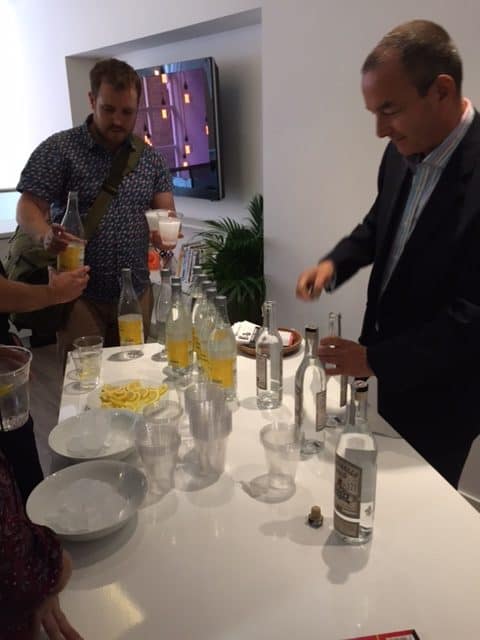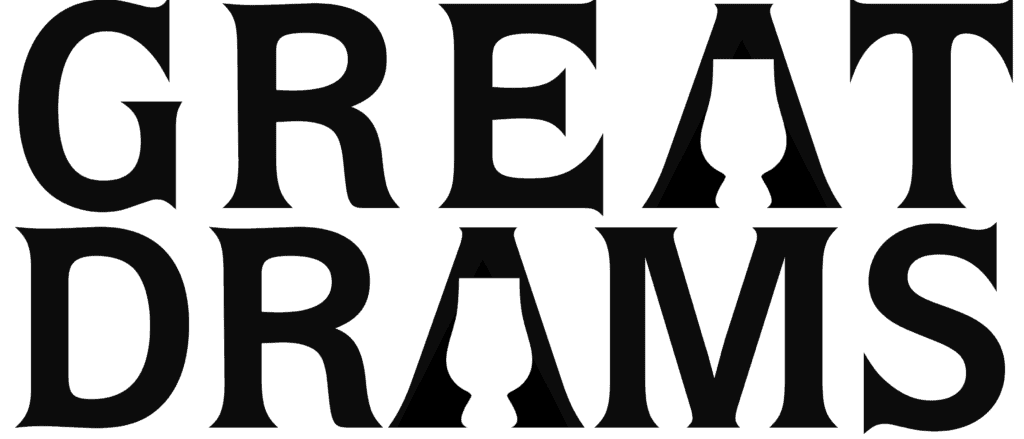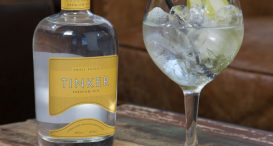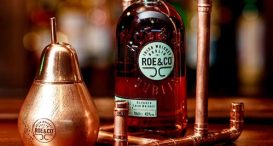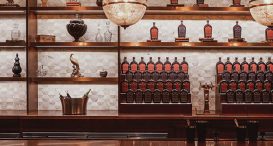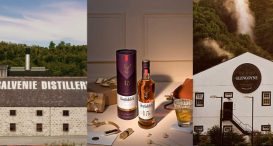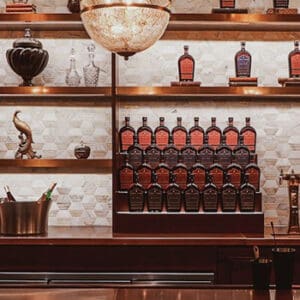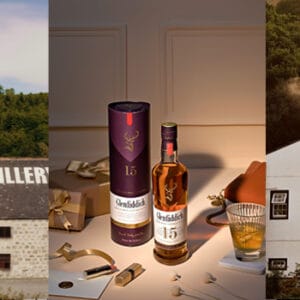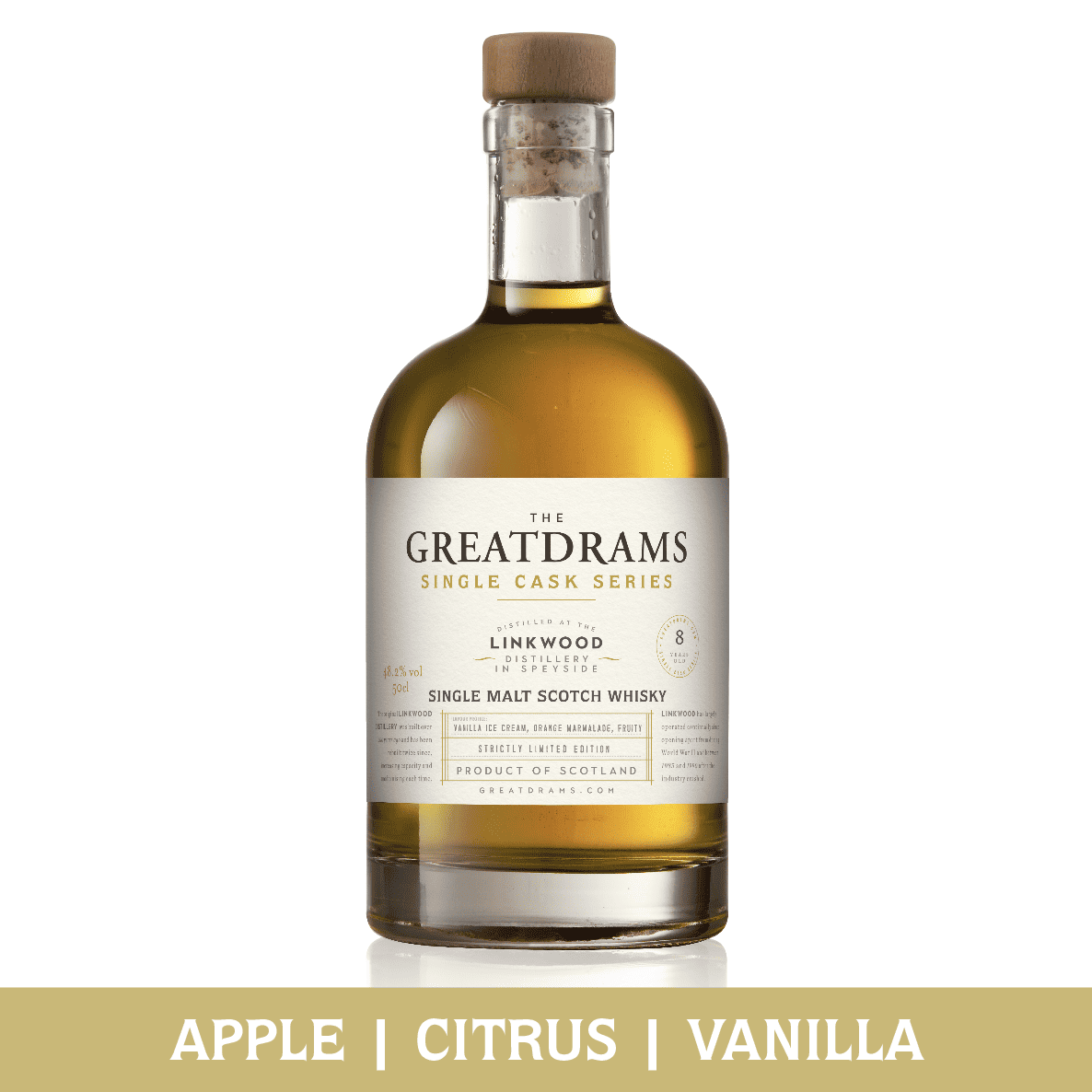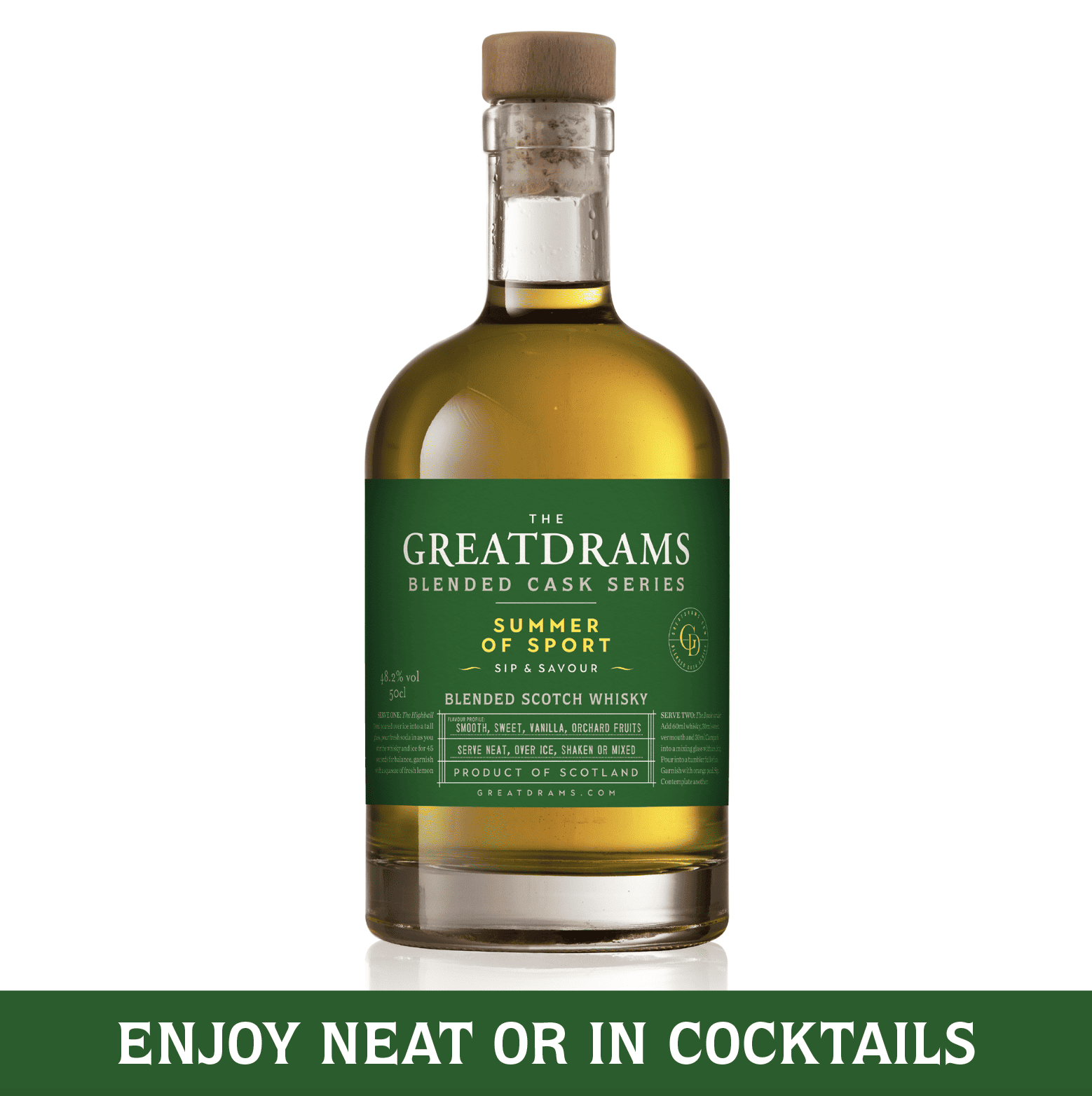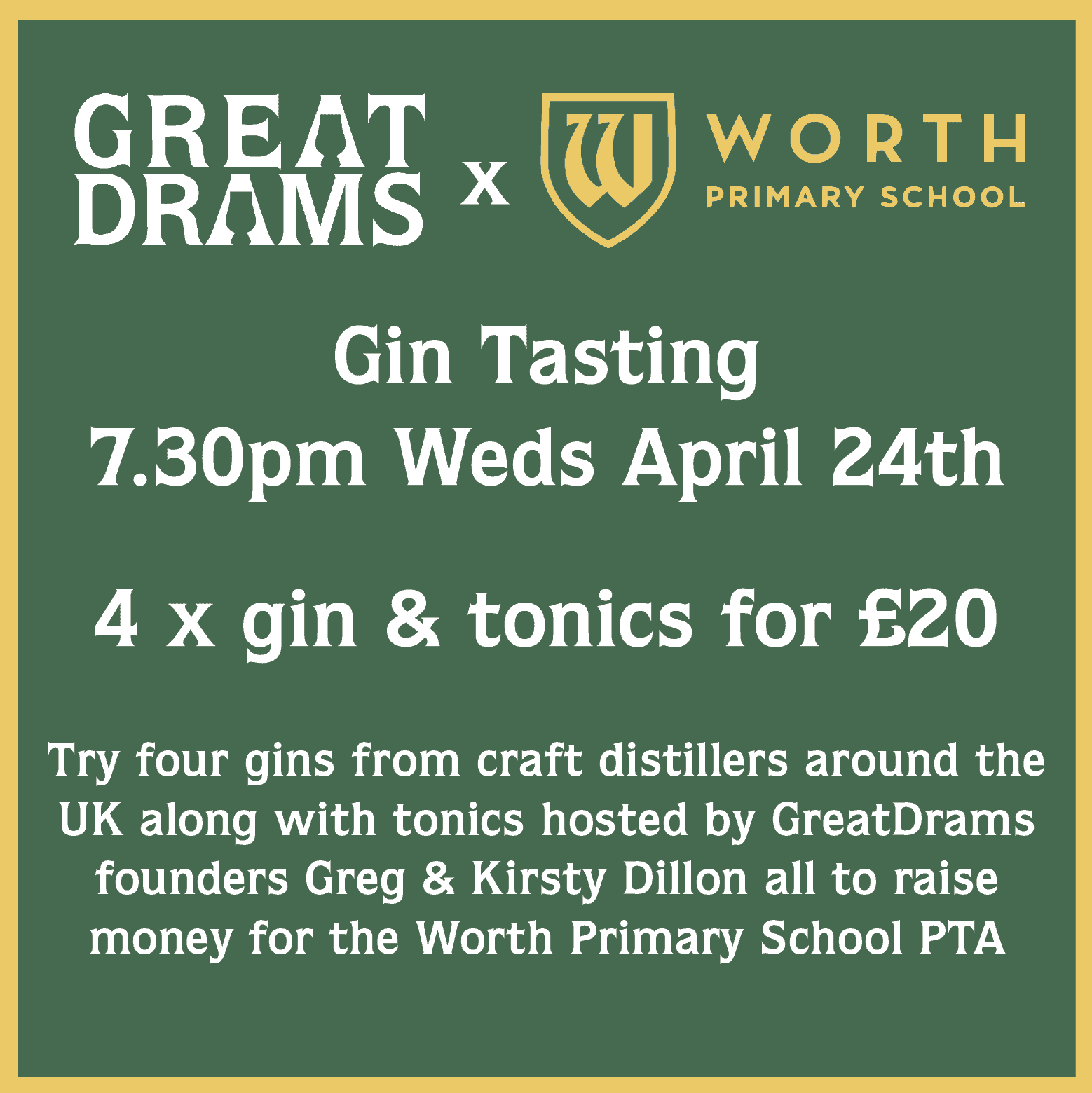Social Media Week: “The Future of Social Media in the Drinks Industry”
let’s begin
On a particularly lovely day in London, Social Media Week #SMWLDN rolled into town and with it I got the chance to attend a panel discussion about "The Future of Social Media in the Drinks Industry”.
The content was of particular interest for both how various whisky clients of mine will need to adapt in the new hyper-connected world and also how GreatDrams has exploded in readership over the last few months. The discussion was around “how social media is shifting our relationship with drink and the drinks industry, and the effect of consumer behaviour above and beyond marketing – and what the future holds for the industry.”
The seminar started, as you’d want, if not expect from the drinks industry, with a round of rather large Portobello Road No 171 G&Ts. Being that GreatDrams is looking to feature white spirits going into 2015, I can safely say that this was a cracker at 42%.
Andrew Gerrard of we are like minds not only poured the drinks but opened the evening.
Cath Jeffries introduced herself as working on Glenfiddich, Tullamore DEW and others within the William Grant & Sons portfolio over the last few years. Rebekkah Dooley started with introducing herself as working with smaller independent brands and Kirsty Chant explained how she has worked with London Distillery Company, Dodd’s Gin along with various WG&S brands too.
“We are at the beginning of the middle” of a new dawn for the industry
We discussed how consumers are more engaged with brands, how there are easy wins to connect with brands through online sharing on ‘free media’ using bitesized and long form, visually rich media.
Kirsty talked around how there is a movement towards people wanting to know everything about the people and process that went in to what they are drinking. They are more engaged.
“It is cool now to know what you are drinking”
It is no longer about information being pushing out, trends come and go more now than back in the past, people move on quicker and take in more with active filtering. Social media has almost forced consumers to be heard by brands, and created perfect platforms to answer whatever questions arise.
Consumers are not waiting for messages from marketers, they need to be spoken to and in context, brands doing well will pick and choose where they get involved and who they talk to.
How important is it to have a strategy as a new spirits brand?
Kirsty speaks around how social media cannot be an afterthought, the strategy cannot be to rigid that you cannot be responsive. The person managing it has to be aware of everything going on in the business, is a communicator and a customer service person armed with key messages.
For bigger brands you need the message to be understood internally as well as externally. Facebook isn’t free, it takes time and effort, it cannot be seen as somewhere to push generic messages out to the ether, usage must be disciplined, be democratic and be used as part of the channel mix.
“Social isn’t a channel, it is one of a host of channels”
How do you advise people on which are best to use?
Ask them if they are using something already so they are comfortable, check out competitors and work out where they want to be, from a startup point of view.
It is not that different to a traditional media plan, it just happens to be different channels. YouTube, Twitter, etc. no different in terms of having a plan and executing it well.
Rebekkah talks around how content quality helps you stand out, if it is not engaging, it is pointless and you will get lost. Cath adds, try partnering with and bouncing of existing platforms and audience bases, you don’t always have to create something new.
1 in 8 social media posts contains a sales message
Rebekkah goes on; “if you say ‘come and buy my cocktail’, no one will come, but if you talk about what you’ve created, how and why, they will come”. Photography has to be top notch too, Kirsty notes.
What’s next?
Brands understanding your life stage and automatically targeting you through your posts, for example; if you are tweeting about being pregnant now, they know in x months you will be able to sell you certain products. Further forward they may even know your drink before you arrive.
GreatDrams notes that my local haunts already know what I want and pour as I walk to the bar, creature of habit!
Great campaigns
Cath discusses how Absolut created a virtual WhatsApp nightclub and you had to prove you were cool enough to get into the party through vids and images then were invited to an Absolut party. Only 630ish people took part but once shared shows that you can garner a big following from a small engagement level.
Jaegermeister did a campaign around Brother in the Corner to celebrate mentors and reward them for their roles in peoples’ lives.
Does location matter?
There are places, Rebekkah notes, able to monitor if you had a cocktail in a bar then went for a coffee or a Mexican, using wifi signals to build rich profiles of what people do, then using this data to target and nuance conversations.
How do you turn social interaction into sales?
Diageo are capitalising live conversation into clicks to buy, fridges will keep track of brands you’re running low on and auto-order, there are exciting possibilities of what could happen and how people use your data.
Social can help build brand loyalty – but what is post loyalty? (GreatDrams asks)
Consistency, Contreau post sporadically, three accounts with inconsistent messages and messaging platforms and made no sense. Also the personality online must translate to the in-bar or at-home product experience.
Consumers behave differently on and off trade due to price drivers and needs and occasion but the brand image must be consistent.
Local market activations will always be different but the positioning must be the same, it has to.
Social channels must work with traditional channels, think about second screen and nuance existing behaviour to next generation technology. Traditional media and marketing will never go away but the way consumers absorb will become increasingly sophisticated. People really do turn off from content that does not seem genuine.
Kirsty closes the Future of Social Media in the Drinks Industry panel discussion with:
In whisky there needs to be better content, it always seems to be the same people communicating to the same consumers saying the same things. If the brands want to recruit new people they need to work with new and existing bloggers and challenge them to create something different. There is a lot of spend going into bloggers next year so we shall see.
GreatDrams response: Well… I guess I should continue to up my game then, challenge accepted.
GreatDrams asks the Future of Social Media in the Drinks Industry panel: what about the non-sexy brands?
Whisky brands all have heritage stories, they all blend into one eventually but you have to find your own voice, get the Ambassadors to be more interesting and engaging and be the face of the brands so telling distillery stories in the place the consumer is as they won’t all be at the distillery.
People may not always care about all the detail and history but weaving interesting stories around the story but linking it to what consumers actually want. Make it more about more than just price.
“Don’t let your key brand messaging get lost in your personal tone” #Insight from the #LikeMinds drinks panel at #SMWLDN
— wearelikeminds.com (@WeAreLikeMinds) September 24, 2014
Brands mentioned doing well on social media: @dolphinhackney, @HawksmoorLondon, or @absolutvodka‘s Whatsapp campaign @wearelikeminds #SMWLDN
— Imbibe Magazine (@imbibeuk) September 24, 2014
A big thank you to the panelists for making this such a vibrant and engaging chat, they were:
Cath Jeffries, Group Account Director – William Grant & Sons, We Are Social
Kirsty Chant, Chant Communications
Rebekkah Dooley, Events, PR & Marketing Manager, Leelex
